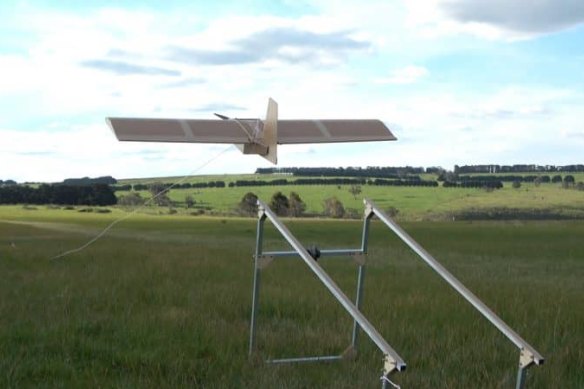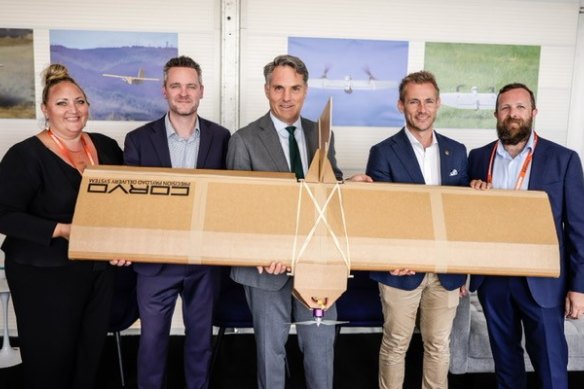Aussie cardboard drones used in attack on Russian airfield
Save articles for later
Add articles to your saved list and come back to them any time.
Australian-made cardboard drones have been reportedly used to help bomb a Russian airfield as the Ukrainian military steps up its attacks on Russian territory.
Ukraine claimed it struck five Russian fighter jets on the weekend in a kamikaze drone attack on the Kursk airfield in Russia, approximately 170 kilometres from the Ukrainian-Russian border.
SYPAQ’s drones, made largely of waxed cardboard and rubber bands, have been sent to Ukraine in flatpacks.
A prominent Telegram channel run by a former Russian fighter pilot, known as Fighterbomber, said that the drones used in the attack included the distinctive lightweight drones made by Australian engineering company SYPAQ in Melbourne.
“Tonight, [Ukrainians] used them in a swarm, mixing drones with warheads with empty drones,” the Telegram post read. “I don’t know exactly what engines were on the drones, but if they were electric-powered, then they were not launched from Ukraine.”
SYPAQ’s drones, which are made from waxed cardboard and rubber, have been exported to Ukraine in flat packs as part of a $33 million donation of uncrewed aerial systems to Ukraine announced by the federal government in February.
At the time the government said the drones would provide “a battlefield intelligence, surveillance and reconnaissance capability” to Ukraine, but it appears the drones are also being used in an attack capacity.
Defence Minister Richard Marles with SYPAQ team members and one of the cardboard drones.Credit: SYPAQ
The drones can carry up to 5 kilograms of cargo.
Ukraine’s ambassador to Australia Vasyl Myroshnychenko said the Kursk airfield was a “legitimate target” for Ukraine’s armed forces.
“Russia uses that airport to launch military operations and send missiles into Ukraine,” he said.
Former Australian general Mick Ryan, who has visited Ukraine several times since the war began, said it was “great” that Australian technology was being used in such missions.
“We’re providing equipment to Ukraine to help them defend themselves,” he said.
“If they want to use it in Ukraine or Russia, it’s up to them.”
Ryan said it would be simple for Ukraine to adapt the drones to carry munitions, and their lightweight nature made them well-suited to breach Russia’s air defence systems.
A source from the Security Service of Ukraine told the Kyiv Post that a wave of drones had hit “four Su-30 aircraft and one MiG-29” at the facility, as well as damaging two Pantsir missile launchers and the radars of an S-300 air defence system.
The source described the operation as “impressive”, saying only three of the drones used in the attack were “shot down by a leaky air defence system of Russia”.
“We will find out the exact consequences of the damage and the number of dead and wounded in the near future,” the source said.
A SYPAQ spokesman declined to comment on how the drones are being used by the Ukrainian armed forces.
In June pro-Putin social media accounts posted photos purporting to show the drones had crashed inside Russian territory with explosives strapped to them.
In March, the company’s chief executive Amanda Holt said it was an “honour to be supporting the Ukrainian Armed Forces”, describing the drones as “an Australian capability that will help the Ukrainian people defend their country”.
The Department of Defence has been contacted for comment.
According to Russian media reports, there have been over 160 suspected aerial drone attacks this year in Russia and in Russian-controlled territory in Ukraine.
Ukrainian President Volodymyr Zelensky has said that attacks on Russian territory are an “inevitable, natural and absolutely fair process” while declining to claim responsibility for specific drone attacks.
Cut through the noise of federal politics with news, views and expert analysis from Jacqueline Maley. Subscribers can sign up to our weekly Inside Politics newsletter here.
Most Viewed in Politics
From our partners
Source: Read Full Article


